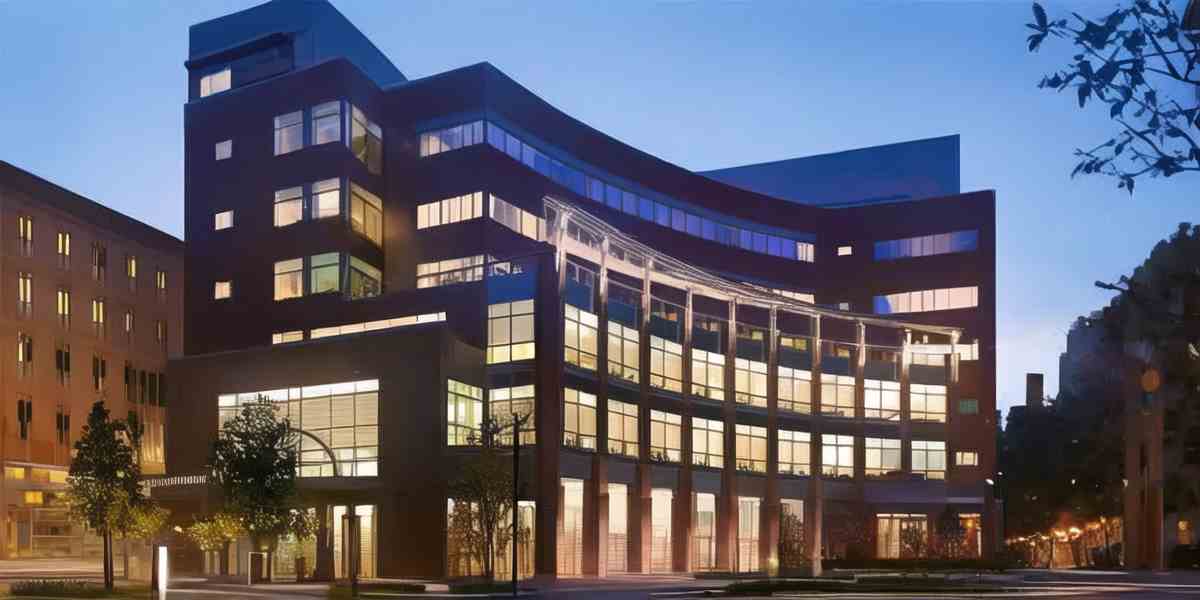Thomas Jefferson University
2024 USNews Best Colleges Ranking: 142(↓15) (Click for schools/majors ranking)
Abbreviation/Alias: Jefferson | (Philadelphia University + Thomas Jefferson University) | Philadelphia University | PhilaU | Jefferson
School Characteristics: Private, non-Profit (4-Years)
Calendar systerm: Semester
Religious Affiliation: Not applicable
School Chief: Mark L. Tykocinski, MD (President)
Website: www.jefferson.edu/; Phone: 2159556000
Location: 1020 Walnut Street, Philadelphia, PA, 19107

Thomas Jefferson University Important Facts
Thomas Jefferson University Degrees and Majors
Thomas Jefferson University Ranking and Admission
Thomas Jefferson University Admission Score Requires
*Numbers at left represent SAT/ACT submitting percentage, numbers on blue blocks represent 25%-75% admission scores
**Drag green block to check data for different years, click blue block to check scores trends
Thomas Jefferson University Students Diversity
Thomas Jefferson University Students Age Distribution
Thomas Jefferson University International Students Trends
Thomas Jefferson University Campus and Safety
Nearby Top Colleges
Campus Safety
Reference
- Thomas Jefferson University Official Website
- USNews Best Colleges Ranking
- USNews Bset Global Universities Ranking
- THE World University Ranking
- QS World University Ranking
- ARWU World University Ranking
- US Department of Education College Scorecard
- National Center for Education Statistics
- Forward Pathway US College Ranking Database
 Thomas Jefferson University Important Facts Trends
Thomas Jefferson University Important Facts Trends
 Thomas Jefferson University degrees/majors
Thomas Jefferson University degrees/majors
Thomas Jefferson University major details
*Depends on whether majors have graduates in 2022 or not, Yes / No
**Move mouse on can check deitaled graudates number, click for major detailed information
***Due to privacy policy, graduate salaries are not shown for some majors that has few gradautes
| Major | Graduate Salary | Associate | Under | Master | Doctor |
|---|---|---|---|---|---|
| Business Administration and Management, General. | $54,418-$75,144 | ||||
| Organizational Leadership. | $54,418-$75,144 | ||||
| Accounting. | - | ||||
| Finance, General. | - | ||||
| Human Resources Management/Personnel Administration, General. | - | ||||
| International Business/Trade/Commerce. | - | ||||
| Marketing/Marketing Management, General. | - | ||||
| Taxation. | - | ||||
| Fashion Merchandising. | $46,908-$47,769 | ||||
| Apparel and Accessories Marketing Operations. | $46,908-$47,769 |
| Major | Graduate Salary | Associate | Under | Master | Doctor |
|---|---|---|---|---|---|
| Psychology, General. | $43,901 | ||||
| Psychopharmacology. | - | ||||
| Counseling Psychology. | $45,447-$51,552 | ||||
| Health/Medical Psychology. | $45,447-$51,552 |
| Major | Graduate Salary | Associate | Under | Master | Doctor |
|---|---|---|---|---|---|
| Interior Architecture. | $56,048 | ||||
| Landscape Architecture. | - | ||||
| Architectural Technology/Technician. | $52,854 | ||||
| Architectural and Building Sciences/Technology. | $52,854 |
| Major | Graduate Salary | Associate | Under | Master | Doctor |
|---|---|---|---|---|---|
| Industrial and Product Design. | $46,237-$70,381 | ||||
| Fashion/Apparel Design. | $46,237-$70,381 | ||||
| Graphic Design. | $46,237-$70,381 | ||||
| Design and Applied Arts, Other. | $46,237-$70,381 | ||||
| Fiber, Textile and Weaving Arts. | $44,248 |
| Major | Graduate Salary | Associate | Under | Master | Doctor |
|---|---|---|---|---|---|
| Biology/Biological Sciences, General. | - | ||||
| Biochemistry. | - | ||||
| Cell/Cellular Biology and Anatomical Sciences, Other. | - | ||||
| Medical Microbiology and Bacteriology. | - | ||||
| Human/Medical Genetics. | - | ||||
| Pharmacology. | - | ||||
| Biotechnology. | - | ||||
| Neuroscience. | - | ||||
| Biological and Biomedical Sciences, Other. | - |
| Major | Graduate Salary | Associate | Under | Master | Doctor |
|---|---|---|---|---|---|
| Speech Communication and Rhetoric. | - | ||||
| Digital Communication and Media/Multimedia. | - | ||||
| Organizational Communication, General. | - | ||||
| Health Communication. | - |
| Major | Graduate Salary | Associate | Under | Master | Doctor |
|---|---|---|---|---|---|
| Construction Engineering Technology/Technician. | - |
| Major | Graduate Salary | Associate | Under | Master | Doctor |
|---|---|---|---|---|---|
| Crisis/Emergency/Disaster Management. | - | ||||
| Forensic Science and Technology. | - |
| Major | Graduate Salary | Associate | Under | Master | Doctor |
|---|---|---|---|---|---|
| Information Science/Studies. | - | ||||
| Modeling, Virtual Environments and Simulation. | - |
| Major | Graduate Salary | Associate | Under | Master | Doctor |
|---|---|---|---|---|---|
| Engineering, General. | - | ||||
| Chemical and Biomolecular Engineering. | - | ||||
| Mechanical Engineering. | $70,329 | ||||
| Textile Sciences and Engineering. | - |
| Major | Graduate Salary | Associate | Under | Master | Doctor |
|---|---|---|---|---|---|
| Pre-Law Studies. | - |
| Major | Graduate Salary | Associate | Under | Master | Doctor |
|---|---|---|---|---|---|
| Biopsychology. | - |
| Major | Graduate Salary | Associate | Under | Master | Doctor |
|---|---|---|---|---|---|
| Building/Construction Site Management/Manager. | - |
| Major | Graduate Salary | Associate | Under | Master | Doctor |
|---|---|---|---|---|---|
| Forensic Chemistry. | - |
 Thomas Jefferson University Schools/Majors Ranking
Thomas Jefferson University Schools/Majors Ranking
Under Ranking (2024)
World University Ranking
*Rankings have been updated to 2025USNews schools/majors ranking, rankings are for reference only
*numbers in bracket represent rankings change compare to last version
 Thomas Jefferson University Varsity Athletes
Thomas Jefferson University Varsity Athletes
| NCAA Division II without football | MEN | WOMEN |
|---|---|---|
| Soccer | 29 | 37 |
| Baseball | 46 | - |
| Track and Field (Outdoor) | 21 | 14 |
| Rowing | - | 28 |
| Basketball | 13 | 14 |
| Lacrosse | - | 25 |
| Softball | - | 24 |
| Cross Country | 13 | 8 |
| Tennis | 11 | 8 |
| Volleyball | - | 16 |
| Golf | 8 | 5 |
| NCAA Division II without football | MEN | WOMEN |
|---|---|---|
| Soccer | 23 | 32 |
| Baseball | 46 | - |
| Track and Field, Outdoor | 18 | 13 |
| Rowing | - | 27 |
| Basketball | 12 | 14 |
| Lacrosse | - | 23 |
| Track and Field, X-Country | 13 | 9 |
| Softball | - | 21 |
| Tennis | 8 | 9 |
| Golf | 9 | 6 |
| Volleyball | - | 15 |
| NCAA Division II without football | MEN | WOMEN |
|---|---|---|
| Soccer | 26 | 37 |
| Baseball | 45 | - |
| Track and Field, Outdoor | 20 | 17 |
| Basketball | 14 | 14 |
| Lacrosse | - | 26 |
| Rowing | - | 26 |
| Track and Field, X-Country | 13 | 12 |
| Softball | - | 23 |
| Tennis | 9 | 9 |
| Volleyball | - | 15 |
| Golf | 6 | 7 |
| Archery | - | - |
| Weight Lifting | - | - |
| Water Polo | - | - |
| Wrestling | - | - |
| Other Sports | - | - |
| Table Tennis | - | - |
| Sailing | - | - |
| Badminton | - | - |
| Beach Volleyball | - | - |
| Bowling | - | - |
| Equestrian | - | - |
| Rodeo | - | - |
| Track and Field, Indoor | - | - |
| Team Handball | - | - |
| Synchronized Swimming | - | - |
| Swimming | - | - |
| Swimming and Diving | - | - |
| Squash | - | - |
| Skiing | - | - |
| Rifle | - | - |
| Ice Hockey | - | - |
| Gymnastics | - | - |
| Football | - | - |
| Field Hockey | - | - |
| Fencing | - | - |
| Diving | - | - |
| All Track Combined | - | - |

 Thomas Jefferson University Important Facts Trends
Thomas Jefferson University Important Facts Trends
















































































































































































































































































































































































































































